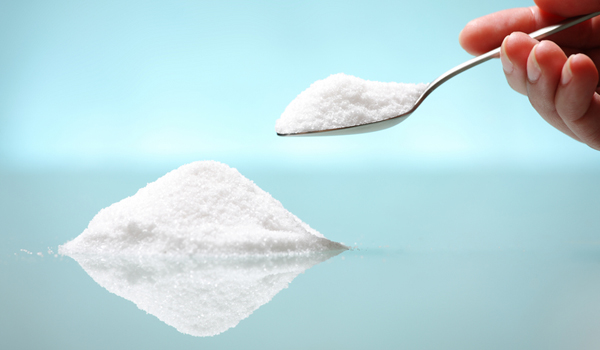Americans Still Eat Too Much Salt, CDC Finds

Despite public health messages telling Americans to lower the amount of salt in their diets, most of us still eat too much of the stuff, according to a new report from the Centers for Disease Control and Prevention.
Nine out of 10 people ages 2 and older in the United States consume more than the recommended amount of sodium each day, the report says.
The average American takes in about 3,300 milligrams of sodium per day — and that's not counting the salt you might shake onto your food before you eat it. The 2010 U.S. Dietary Guidelines recommend people limit the salt in their diet to 2,300 milligrams per day. And for 6 out of every 10 adults, the recommended limit is substantially lower: those who are 51 years or older, African-American, have high blood pressure, diabetes or chronic kidney diseases are advised to limit their sodium intake to 1,500 milligrams per day. About 99 percent of people in this latter group eat too much salt, the report says.
"Too much sodium raises blood pressure, which is a major risk factor for heart disease and stroke,” Dr. Thomas Frieden, director of the CDC, said in a statement. "These diseases kill more than 800,000 Americans each year, and contribute an estimated $273 billion in health care costs," he said.
A 2010 report from the CDC, based on surveys from 2005 to 2006, also found that 9 in 10 Americans consume too much salt. However, the average daily sodium intake reported back then was slighly higher, about 3,500 milligrams.
Top sources of sodium
The report identified the top 10 sources of sodium in our diets, which include a lot of food we find tasty. These are, in order: breads and rolls, luncheon meats, pizza, poultry, soups, cheeseburgers and other sandwiches, cheese, pasta dishes, meat dishes such as meat loaf, and snack foods like potato chips and pretzels. These foods account for 44 percent of all the sodium we eat in a day.
Sign up for the Live Science daily newsletter now
Get the world’s most fascinating discoveries delivered straight to your inbox.
Bread is not particularly high in sodium, but because we eat a lot of it, the food is a significant source of sodium, the report says.
About 65 percent of our total daily sodium comes from foods we buy at the store. But within some of the food categories, such as pizza, about 50 percent comes from foods we buy at restaurants and fast food outlets.
For children ages 2 to 19, only about 8 percent of sodium comes from foods obtained from school cafeterias and day care centers, the report says.
The findings are based on surveys of 7,227 Americans conducted between 2007 and 2008.
Cutting back on salt
Cutting back on salt isn't easy, the report acknowledged. Some foods that may seem healthy, such as turkey lunchmeat that is low in calories and fat, may have high levels of sodium, the report said. In addition, a lot of the salt we eat comes from processed foods.
The CDC recommended Americans check food labels to purchase foods with lower sodium content. People should also try to consume a diet rich in fruits and vegetables, and limit the amount of processed foods with high sodium content, the CDC says. [See 'Low Sodium' or 'Lightly Salted'? Sodium Labels Explained (Infographic)].
Frieden said that some food manufacturers and restaurants are making efforts to lower the amount of salt added to their foods.
"We're encouraged that some food manufacturers are already taking steps to reduce sodium," Frieden said. "Kraft Foods has committed to an average 10 percent reduction of sodium in their products over a two-year period, and dozens of companies have joined a national initiative to reduce sodium. The leading supplier of cheese for pizza, Leprino Foods, is actively working on providing customers and consumers with healthier options," Frieden said.
Lowering the average American's salt intake by 400 milligrams could prevent up to 28,000 deaths, and save $7 billion in health-care costs, each year, according to projections in the report.
However, not all studies have been able to find benefits of a reduced salt diet. A review study published last year that included information from 6,500 people found that moderate reductions in salt in the diet lowered blood pressure, but did not reduce participants' risk of having heart disease or dying.
Dr. Robert J. Myerburg, a professor of cardiology and physiology at the University of Miami Miller School of Medicine, said that for people with heart failure or hypertension, there is solid evidence that a low sodium diet is beneficial.
But for people in the general population, it's less clear what the right amount of salt is, Myerburg said. Like any other food, too much or too little can be a bad thing.
Limiting salt is generally a good idea, but "you can overdo a good thing if you're too restrictive with sodium," Myerburg said. At this time, Myerburg said he would not tell someone in the general population — without heart failure, high blood pressure or a predisposition for high blood pressure — to limit sodium. But people should be reasonable about how much salt they consume, Myerburg said, and the current guidelines are a reasonable recommendation, he said.
Pass it on: Americans should limit their sodium intake to 2,300 milligrams per day. One way to do this is to cut back on processed foods with high sodium content.
This story was provided by MyHealthNewsDaily, a sister site to LiveScience. Follow MyHealthNewsDaily on Twitter @MyHealth_MHND. Find us on Facebook.











